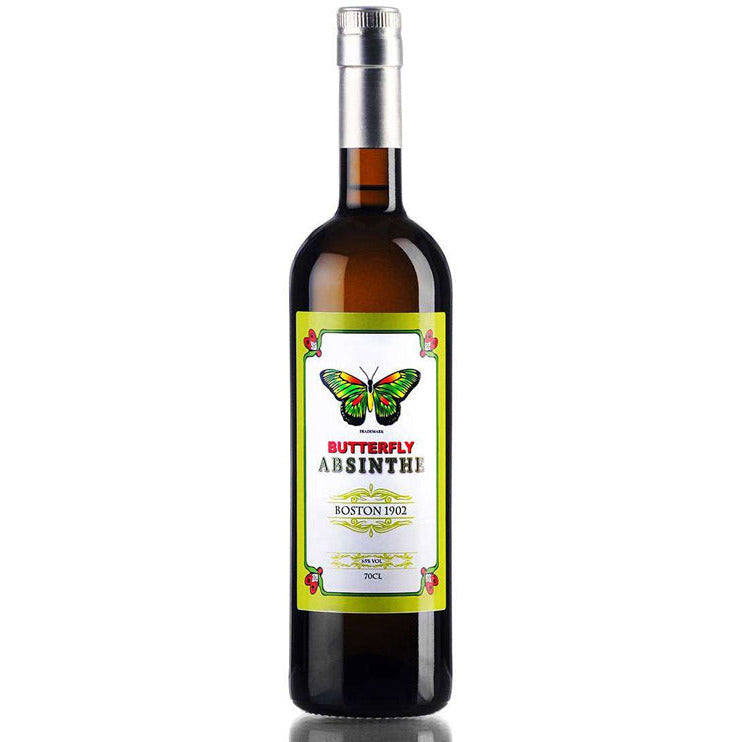Butterfly Absinthe Classic Absinthe Butterfly Absinthe
$ 95,99 $ 47,99
Butterfly absinthe is a modern rendition of a classic pre-prohibition absinthe produced in Boston in the early 1900s. America was ripe with domestically produced absinthe prior to prohibition. The absinthe Americans created was unique in style and different from what was imported from Europe. Pre-Prohibition American absinthe made liberal use of the herbs growing in the Midwest and New England. Fields of wormwood were scattered across the country and yielded so much of the famed herb that it was exported to Europe. The style stands out from other classic absinthes by its use of mint, citrus zest and other herbs creating a complex but refreshing flavor profile.
The concept of Butterfly Absinthe began while an American absintheur, Brian Fernald was researching pre-prohibition distilleries in Massachusetts. Brian has a strong appreciation for absinthe and the history of classic cocktail ingredients. In his mind, Butterfly Absinthe should have been one of the first absinthe brands American distillers looked towards when the TTB adjusted their viewpoint on absinthe in 2007. Instead, Butterfly remained overlooked and Brian decided to start the project himself. The first step of the project was enlisting a group of local historians to research the brand and the Dempsey family. The research yielded a treasure trove of distilling information including a collection of books once owned by the Dempsey family with hand annotated recipes. With this valuable information, Brian set out to find a distiller to bring the Butterfly recipe back to life.
Claude-Alain Bugnon of La Clandestine fame was approached to see if he was interested in the project. La Clandestine had been one of Brian’s favorite absinthes since he purchased one the first bottles produced in 2005. Claude-Alain was intrigued by the idea of Butterfly and agreed to create a distillers proof from Dempsey’s recipe. From there, Butterfly went into commercial production with a release date in the summer of 2010.
Quick Shipping and Professional Packaging
We offer a broad range of shipping options thanks to our long-running partnerships with UPS, FedEx and DHL. Our warehouse staff are educated to pack your items exactly as per the specifications that we supply. Your items will undergo a thorough inspection and be securely secured prior to being shipped. We ship to thousands of customers each day from multiple countries. This is a sign of our determination to become the largest online retailer worldwide. Both Europe as well as the USA have distribution and warehouse centers.
Please note that orders with more than one item will be given a processing time according to the specific item.
Prior to shipping, our team will perform an exhaustive inspection of the items you purchased. Today, the majority orders will be shipped within 48 hours. The delivery time is estimated to be between three and seven days.
Returns
The stock is constantly changing and cannot be fully controlled by us due to the involvement of several different parties, such as the factory and our warehouse. The actual stock can change at any moment. Please be aware it's possible your order may become unfulfilled when you have placed the order.
Our policy is valid for a period of 30 days. If it's been more 30 days since you purchased your item and we're unable to offer you a full refund or exchange.
You are able to return an item when it's unopened and is in the same condition when you first received it. It must also be in the original packaging.
Related products
Cabernet Sauvignon
1865 Cabernet Sauvignon Selected Vineyards Maipo Valley 1865
Sauvignon Blanc
Vodka
Chardonnay
Vodka
Cabernet Sauvignon


































